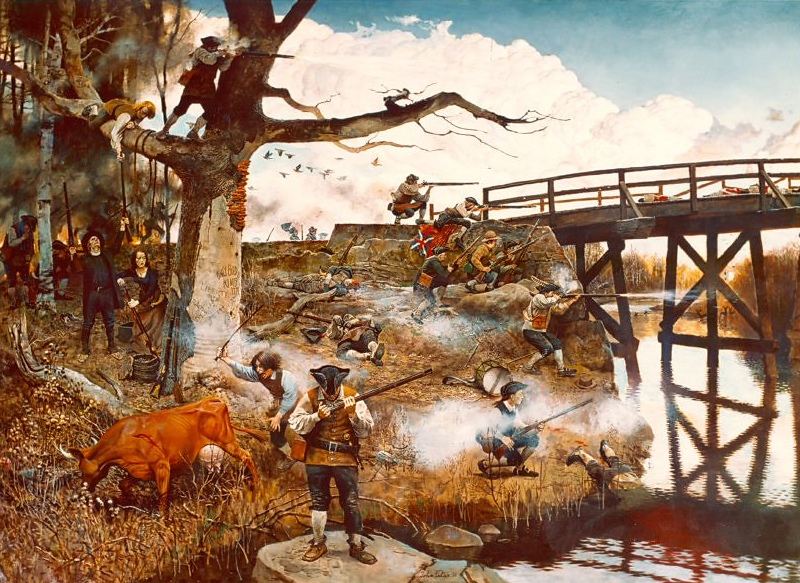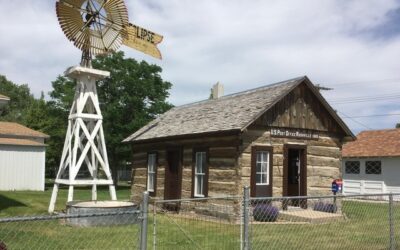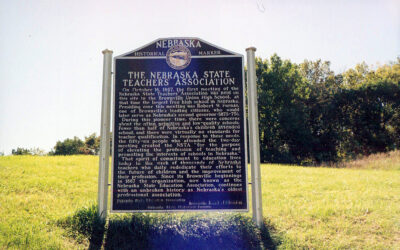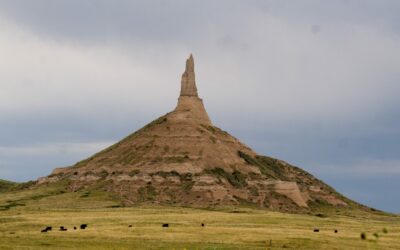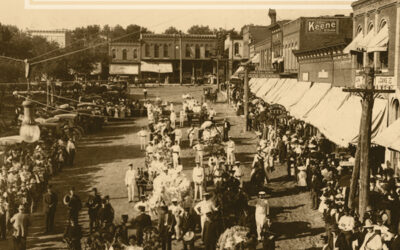By David L. Bristow, Editor, April 17, 2025
April 19, 2025 marks the 250th anniversary of the Battles of Lexington and Concord, which launched the American Revolution.
By the mid-twentieth century, John Falter of Falls City, Nebraska, was one of the nation’s leading illustrators. In the years leading up to the U.S. Bicentennial he was commissioned to create a series of historical paintings. This one, “The Bridge,” depicts the fight at the North Bridge during the Battle of Concord.
British regulars had marched from Boston to seize weapons and supplies stored by the Massachusetts militia. The standoff at the North Bridge led to the “shot heard round the world,” in Ralph Waldo Emerson’s words.
Falter’s widow donated the contents of his art studio to the Nebraska State Historical Society. The collection includes Falter’s statement about how he used historical research and attention to detail to give viewers a fresh look at an iconic American scene.
“The confrontation at the bridge suggests a symbolic ‘crossing’ that the Americans elected to make for their own self-rule,” Falter writes. “The general feeling at the time was that, if the Americans lost their bid for freedom, they would be dealt with quite harshly by the British. In other words, they were really ‘putting it all on the line’ at Lexington and Concord.”
But choosing such a well-known scene posed a challenge for an artist. Americans had long known all about the Battle of Concord, or thought they did. In his famous 1860 poem, “Paul Revere’s Ride,” Henry Wadsworth Longfellow tells the story up to the standoff at the bridge, and then says:
You know the rest. In the books you have read,
How the British Regulars fired and fled, —
How the farmers gave them ball for ball,
From behind each fence and farm-yard wall…
Falter wanted to suggest “a tranquil country background that has suddenly been shook asunder by the first cracks of militarily-synchronized musket fire.” To create this mood, he included details such as the “flurry of blackbirds and the startled brown Swiss cow.”
“Including these background elements in the painting is part of what I mean by ‘looking at history out of the corner of your eye.’”
Other details involved careful research and the assistance of a profession historian: right and left shoes did not yet exist; cows were smaller at that time; the wildlife includes the now-extinct passenger pigeon; and the captured British flag is an earlier iteration of the Union Jack. And as models, Falter used present-day local militia re-enactors.
Read more about John Falter and his Nebraska roots in Nebraska History (PDF).
View works from the John Falter collection gallery at the Museum of Nebraska Art.

